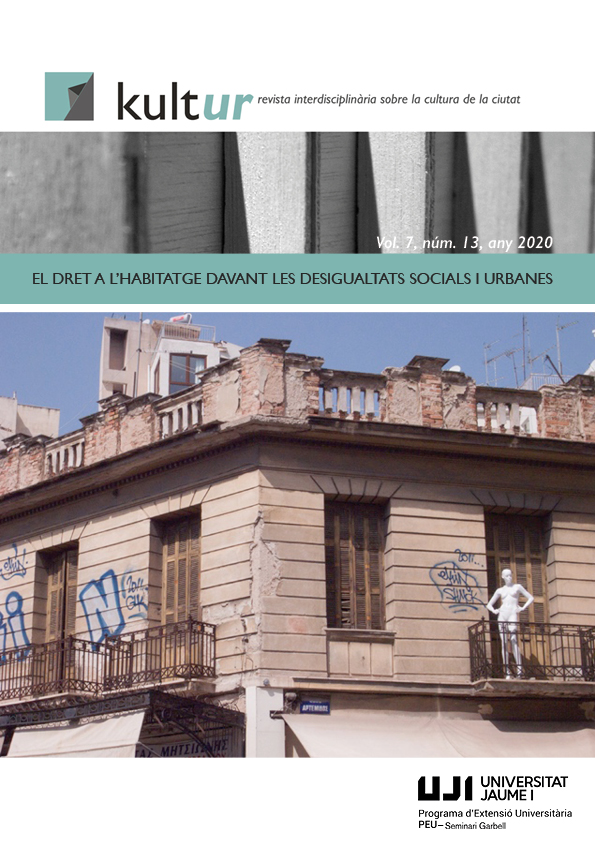Beyond SmartCities: How to create an Attractive City for Talented Citizens
##plugins.themes.bootstrap3.article.main##
Resum
In the recent context of general economic stability and peace, cities have become the world’s key centers for human development. Without a clear leader in the 4th Industrial Revolution, cities are fiercely competing to attract talent. Investing in technology and innovation (SmartCities) is an essential and mandatory condition to draw that talent in, yet it is not sufficient alone. Choosing a city to live in is a complex decision, akin to making a major purchase, getting married, or signing a contract. So, the question arises: what makes a city attractive to talent?
In this article, it is postulated that, as with every human decision, there is a compromise between two parties: the emotional component, which we call city magnetism, and the rational component, which we call city profitability.
We study the world’s top 140 most attractive cities according to international studies in a custom model made up of more than 100 indicators. The objective is twofold: to help talented citizens evaluate cities in order to find which ones will best help them reach their potential; and to help politicians and city officials create the conditions that make their city as attractive as possible. This is not simply a question of technology or investment; identity, urban planning and social sustainability are determining factors too.
Descàrregues
##plugins.themes.bootstrap3.article.details##
.png)
Tots els continguts de la revista kult-ur se distribueixen sota una llicència d'ús i distribució Creative Commons Atribució-Compartir Igual 4.0 Internacional (CC BY-SA 4.0), excepte indicació contrària. Pot consultar ací la versió informativa i el text legal de la llicència. La indicació de la llicència d'ús i distribució CC BY-SA 4.0 ha de constar expresament d'aquesta manera quan siga necessari.
Referències
Alcalde, I. (2017). «Ciudades con Alma en la Era Digital». CITIZEN http://thecitizen.es/cultura/ciudades-con-alma-en-la-era-digital retrieved by June 2019
Allen, W. (2008). Vicky, Cristina, Barcelona.
Aristotle (596 BC). Politics, Book1, Section 1252b27-30
Berrone, P. & Ricart, J.E. (2018). «IESE. Cities in Motion Index 2018». IESE. https://media.iese.edu/research/pdfs/ST-0471-E.pdf retrieved by March 2018
Caen, H. (1957). Herb Caen’s Guide to San Francisco, Doubleday & Company, Inc., Garden City, New York
Chueca Goitia, F. (1968A). Breve Historia del Urbanismo. Alianza Editorial, Madrid p.9
Chueca Goitia, F. (1968B). p.250
Chueca Goitia, F. (1968C). p.33
Florida, R. (2007). The Flight of the Creative Class. Collings. New York, 2007 p.37
Haynes, C. (2014). «Magnet cities. Decline | Fightback | Victory», KPMG. pp. 4-32
Hobbes, T. (1651). Leviathan, XVIII
Koolhaas, R. (1997). Acerca de la ciudad, GG, Barcelona, 2014 from The Generic City Domus, núm. 791, Milano, pp. 8-12
Lynch, K. (1960). The Image of the City. The MIT Press, Cambridge (MA, USA), pp.9-10
Marias, J., Ridruejo, D., Chueca, F. (1983). Ciudades. Editorial Prensa Española, Toledo, p.231
Mercer (published by Feb 2018). «Quality of Living Mercer Index. 2018», https://mobilityexchange.mercer.com/Insights/quality-of-living-rankings retrieved by March 2018
Nordicedge (2018). https://www.nordicedge.org/ retrieved by March 2018
Pinto, C.A. (2009). «Manifesto for a new urbanity. European Urban Charter II». Council of Europe. Strasbourg, p.49 https://rm.coe.int/urban-charter-ii-manifesto-for-a-new-urbanity-publication-a5-58-pages-/168095e1d5 retrieved by Aug 2019
Reputation Institute (2017). World’s most reputable cities.2017 https://insights.reputationinstitute.com/blog-ri/the-world-s-most-reputable-cities-explained retrieved by Oct 2018
Riza, M., Doratli, N. and M. Fasliet (2012). City Branding and Identity Procedia - Social and Behavioral Sciences vol 35, Elsevier B.V. Universiti Teknologi MARA, Malaysia, p.294
Rossi, A. (1978). La arquitectura de la ciudad. Ed. Gustavo Gili. Barcelona. pp.148-149
Rousseau, J-J. (1762). On the social contract, published in Amsterdam,
Shakespeare, W. (1609). The tragedy of Coriolanus. Act3 Scene1.
Smartcityexpo & Ww Congress (2018). http://www.smartcityexpo.com/en/home retrieved by March 2018
Spengler, O. (2013). La decadencia de Occidente, Editorial Austral, Barcelona, vol II, p.131
Terence (163 BC). (Latin: Publius Terentius Afer) Heauton Timorumenos (The Self-Tormentor) Act I, scene 1, line 25 (77).
The Economist (published by Feb2018). «Global Liveability Report» https://store.eiu.com/article.aspx?productid=455217630 and https://www.eiu.com/public/topical_report.aspx?campaignid=liveability2018 retrieved by March 2018
Tybout, A. & B. Calder (2010). Kellogg on Marketing. WILEY. New Jersey p.8
Unesco Creative Cities (2019). http://www.unesco.org/culture/culture-sector-knowledge-management-tools/09_Info%20Sheet_Creative%20Cities%20Network.pdf p.1, retrieved by Oct 2019
Van Den Berg, L.; J. Van De Meer; A. Oligaar (2006) The attractive city: Catalyst of Sustainable Urban Development Erasmus University, Rotterdam. San Sebastián : Eusko Ikaskuntza. p.489
Vanderbeke, D. (2007). The city as a Superorganism. The Mighty Heart or The Desert in Disguise? The Metropolis Between Realism and the Fantastic. Tübingen: Stauffenberg Verlag, pp.162-165


